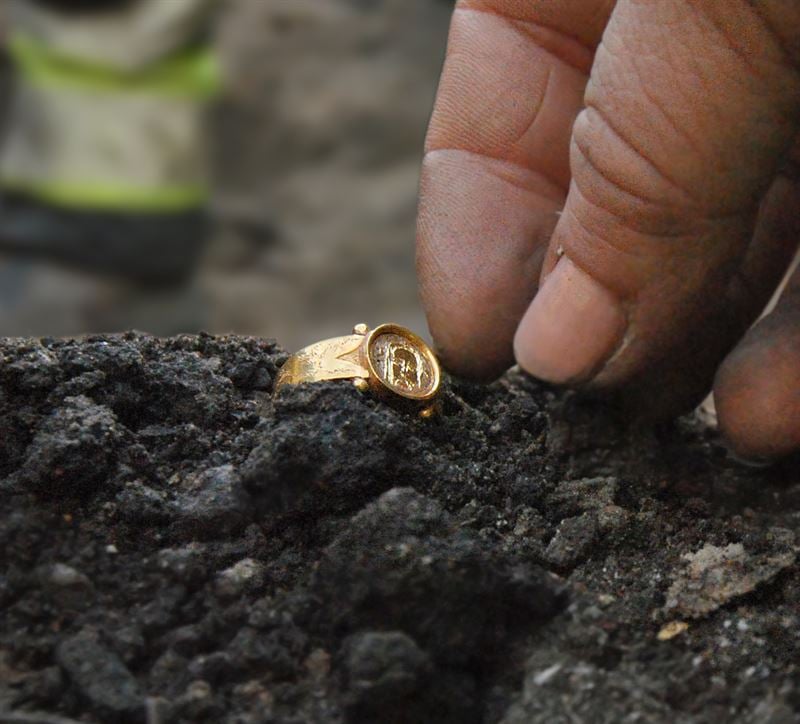
Swedish archaeologists operating under the Swedish State Historical Museums are at work on a multi-year excavation of Kalmar. The seaside metropolis on the southern half of Sweden’s Baltic coast was formerly one of the country’s most important cities. Recent efforts excavating 50 medieval plots, 10 streets, and parts of an old city wall in the one-time stronghold have turned up 30,000 relics so far, including precious jewelry. A few weeks ago, project manager Magnus Stibéus announced the team has found two admirable works of craftsmanship in a defunct dump, including a carved glass amulet and a gold ring depicting Christ.
A media statement around those latest discoveries noted that while archaeologists have been exploring Kalmar’s remains for the past 100 years, this particular excavation marks an extraordinary opportunity to survey so much of the city’s Old Town at once. The current dig is taking place in tandem with a public works plan to renew water, sewage, and storm pipes throughout Kalmar. The group of archaeologists behind the undertaking posited ahead of time that it would find former houses, wells, and lost ancient dumps—alongside evidence of bustling craft, trade, and the fabled Kalmar War of 1611.
The team, however, could not have predicted what they would turn up in those bygone waste management facilities. That’s where both the gold ring and glass amulet turned up. The former likely marked a stroke of bad luck. Based on the ring’s small size and stunning condition, Stubéus theorized that a woman dropped it one day during the 15th century. Similar gold rings with Christian iconography have cropped up across Northern Finland, Östergötland, and Uppland, he added.
The broken alsengem, reimagined. Courtesy of the Swedish State Historical Museums
Meanwhile, Stibéus believes that the glass amulet, also known as an alsengem, could have been thrown away on purpose, since it was broken. Such amulets are named for the Danish island of Als, where they were first found. Though these pieces typically commemorated pilgrimages, alsengems appear to hail from both religious and secular contexts. Before it was broken, this specific specimen featured three carved figures. It’s dated around the 13th or 14th centuries.
And those gems aren’t all the researchers found. In addition to remnants from hundreds of buildings, cellars, and latrines, the latest Kalmar mission has unearthed a 12th-century rune stone from a cemetery and scores of cannonballs and swords left over from the city’s legendary military history.
“We have been able to lift the lid on the city’s Middle Ages and have had the opportunity to study how people lived, what they ate and drank and how this changed over time,” Stibéus remarked in the release. “Archaeology becomes like a peephole into medieval history that allows us to learn more about how life was several hundred years ago.”